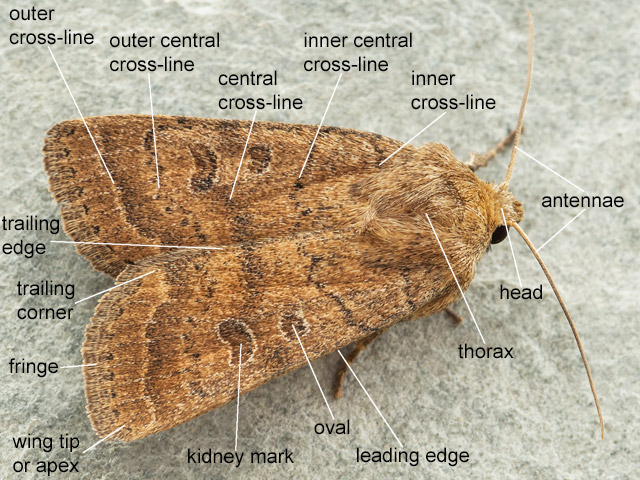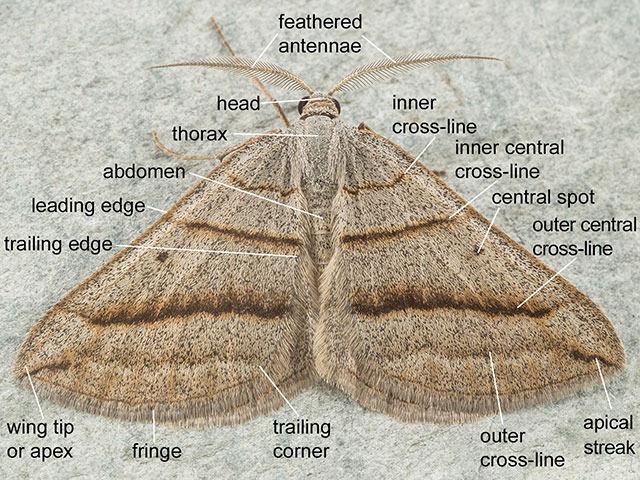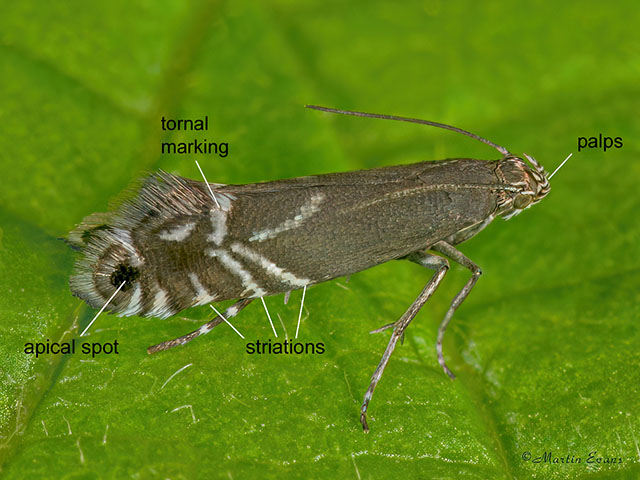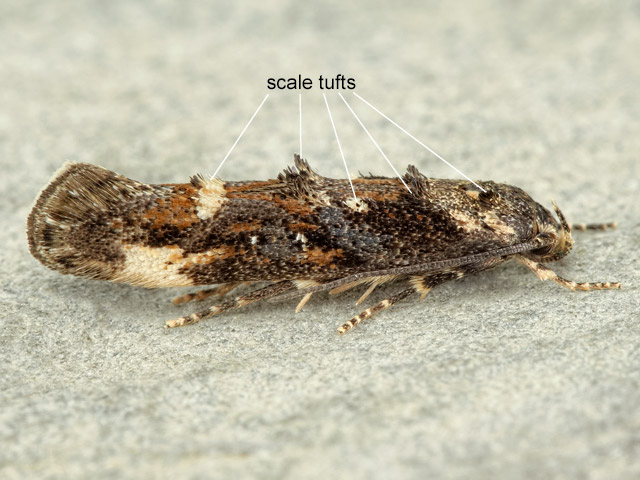Lepidoptera Anatomy
The simplified names used to describe the parts of the larger moths on this website follow Waring and Townsend (2017).
The smaller moths may have a few extra features as can be seen from the pictures.
Common features are a series of striations along the leading edge in the outer area of the forewing, a marking in the trailing corner of the wing (the tornus), or a terminal spot at the wing tip.
The palps (which are also present in the macro-moths) are often an important feature of the smaller moths as the banding or enlargement may help to identify them.
Scale tufts are found in some species including many Tortricidae, Momphidae and Gelechidae.
A feature sometimes used to identify Coleophora larvae is the angle of the case compared with the mouth plate which is known as the m.o.(mouth opening).
An m.o. angle of 0 would mean the larva would sit prostrate against the leaf or stem. An m.o. angle of 90 would mean it was vertical on a horizontal leaf. An m.o. of 30 would mean it would sit at 30 degrees to the leaf.



